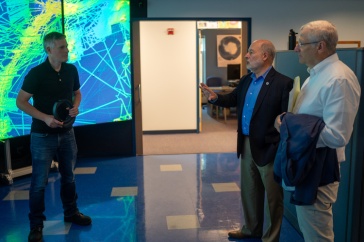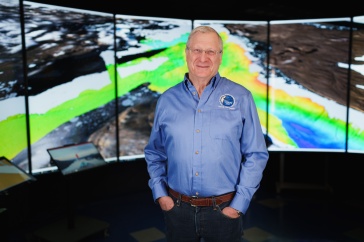
Photo: Perry Smith/UNH Photographic Services
It may look like a roller coaster or a video game, but the 3-D map behind Colin Ware, director of data visualization research at UNH’s Center for Coastal and Ocean Mapping, is serious business. In the fall, Ware published research tracking the movements of humpback whales in the southern Gulf of Maine that illustrated the animals’ heretofore unknown preference for bottom feeding. Because entanglement with fishing gear is a major threat to humpbacks, Ware’s findings have implications for “bottom-set” techniques—such as those used in lobstering—in the region. Ware and his collaborators affixed suction-cupped recording tags to the whales’ backs to gather the data, which revealed not only feeding behaviors but also the animals’ highly acrobatic aquatic travels.
Originally published in UNH Magazine—Winter 2014 Issue



















































